This is Part 1 of the series ‘The History of Sydney Road.’ Check out the second part here and the third one here.
Whence /wɛns/ conjugation, (old fashioned): the place, source, or origin of something.
Do you know the oldest pub in Brunswick? Reba Brown, bartender at the Retreat Hotel on Sydney Road, can tell you. “It’s always nice to see people’s faces light up when telling them about [the history]” she says.
Whether it be the ‘prehistoric,’ unopened beer cans on display, the ‘dungeon’ under the dance floor, or the mysterious safe upstairs, which no locksmith has been able to crack. “We’ve all had our guesses at what’s inside – money, guns, who knows… the mystery is the best part, it’s cool to be a part of that.”


Look familiar? Source: Merri-bek City Council
But how did the Retreat – and so many other Brunswick staples – come to be on Sydney Road? And how, for that matter, did the road itself come to be? Let’s take a journey, shall we?
Sydney Road began as a mere line in the mind of Robert Hoddle, the man responsible for mapping the lands of the Kulin Nation for colonization by the British. Drawn up in 1840 – only three years after the CBD grid was sketched out – that line cut through the flat countryside between the Merri and Moonee Ponds Creeks.
It was a windy, open place, used by the local Wurundjeri-willam people for hunting kangaroo and holding ceremonies. That wasn’t exactly what the surveyors had in mind for the area, though. With the road now in place, blocks of land were auctioned off to wealthy Brits with names like Fawkner, Chisholm, McCrae and Atkins, who promptly sub-divided their land and sold it off again for profit.
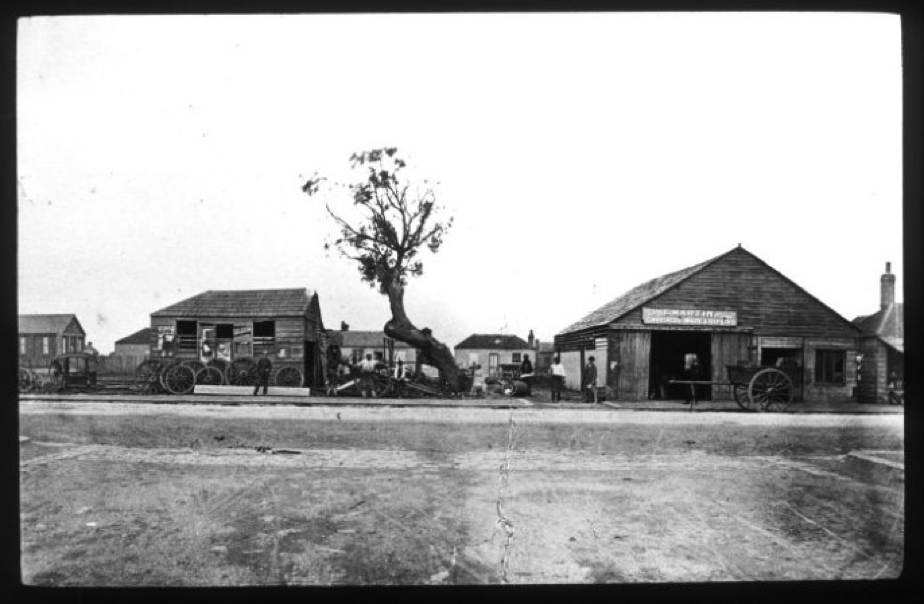

Sydney Road, 1863 Source: Merri-bek City Council
For a time, the new road remained a quiet country track, hard and dry in the summers and waterlogged in the winters. In fact, we didn’t even call it Sydney Road then. Pentridge was its name, seeing as it ran from Melbourne out to Pentridge Village (now Coburg, but remembered still by Pentridge Prison). It was only renamed later, to reflect Hoddle’s original intention for it as a main route to Sydney.
It wasn’t long before somebody realised that travellers might need somewhere to rest on their journeys and, more importantly, might be a little thirsty. The Retreat Inn, as it was first called, opened in 1846, its licensee a woman by the name of Miss Amelia Shaw.
The Retreat became the centre of the nascent rural community. It was the clubhouse of the first sports team in Brunswick, the Pentridge Cricket Club, which began playing matches in 1855 on grounds behind the building.
Rebuilt in 1892 and renamed the Retreat Hotel, it stands still as reminder of the earliest days of Melbourne, when Brunswick was but a scattering of settler’s cottages across the plain. Still, it keeps up with the times. Upstairs, the eclectically cool, retro cocktail bar and function space has just re-opened. The name? Amelia Shaw.
Of course, The Retreat wasn’t the only hotel on Sydney Road for long. Waves of travellers in the 1850s and 60s saw competitors popping up all along the strip. Why all the travellers? One word: gold.
The Cornish Arms, the Sarah Sands, the Edinburgh Castle, The Cumberland Arms, even the now sadly-closed Brunswick Hotel. All were built in the heyday of the gold rush that saw Melbourne catapulted onto the world stage.
They served not only as rest-stops for travellers on their way to the goldfields, but as social institutions. Brunswick’s first council meeting was held at the Cornish. The Cumberland, meanwhile, hosted Brunswick’s first courtroom, first theatre, and “all business transacted in connection with [the new shire],” according to an 1893 newspaper article. Not to mention the more colourful side of its history. Mysterious deaths, robberies, stabbings, and brawls have all been reported at the Cumberland over the years.
Thankfully, things have calmed down. In 2019, the hotel was refashioned into a wine shop and bar called Rascal (today Tino).
The extra traffic of the 1860s soon revealed Sydney Road’s woeful condition, however – “execrable,” described would-be gold-digger William Howitt. All the early, backbreaking work to improve it was done unpaid by prisoners from Pentridge, who leveled the surface, drained the roadway, quarried stone and laid the road.
Water was pumped from the Yan Yean Reservoir to buildings and gas street-lighting was installed. 1887 saw the introduction of horse-drawn trams, which carried passengers along Sydney Road’s first tram tracks.
By then, Melbourne was swept up in a land boom and new hotels like the Duke of Edinburgh were being built in grand, three-storey style. Meanwhile, the Cumberland got a spiffy reno to try and outdo the new competition.
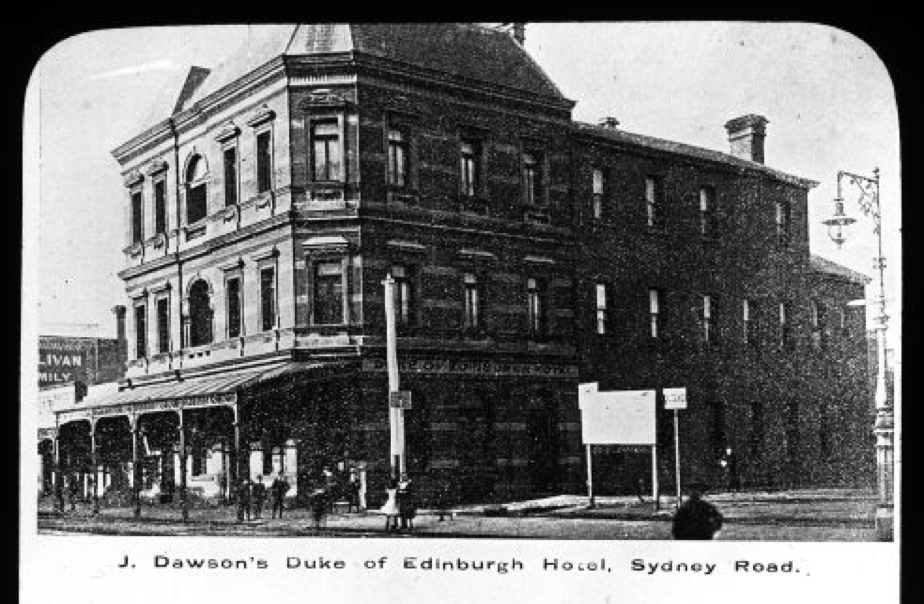

The Duke of Edinburgh in 1907, source: Merri-bek City Library
Other heritage buildings were constructed, as well. Like Brunswick’s first post office, that would go on to become Penny Black (today Nono), or the hall built in 1872 for the Manchester Unity Order of Oddfellows – a social welfare organisation that pioneered concepts such as health and life insurance and community support for its members.
The Oddfellows Hall was a staple of the community, eventually becoming the most popular social hall in town. It was bought in 2011 reimagined as the Brunswick Mess Hall, serving delicious Thai food in a German Beer Hall setting.
What’s that, you say? That same road that served 170 years ago as a rest-stop and watering hole on the way out to the gold fields now hosts a wedding precinct? How did that happen? And what does the answer have to do with Brunswick’s many lovely parks?
This was Part 1 of the series ‘The History of Sydney Road.’ Check out the second part here and the third one here.

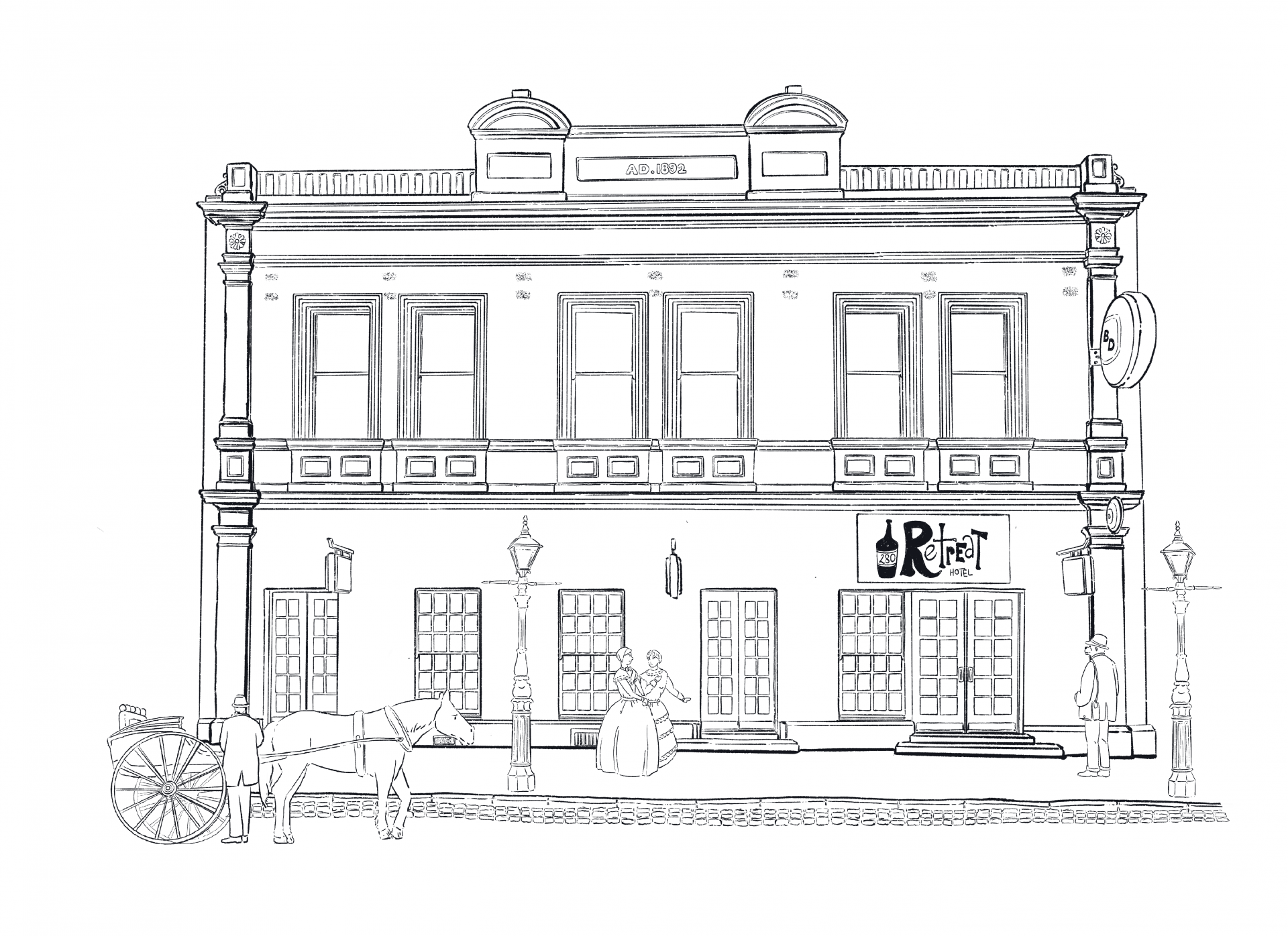
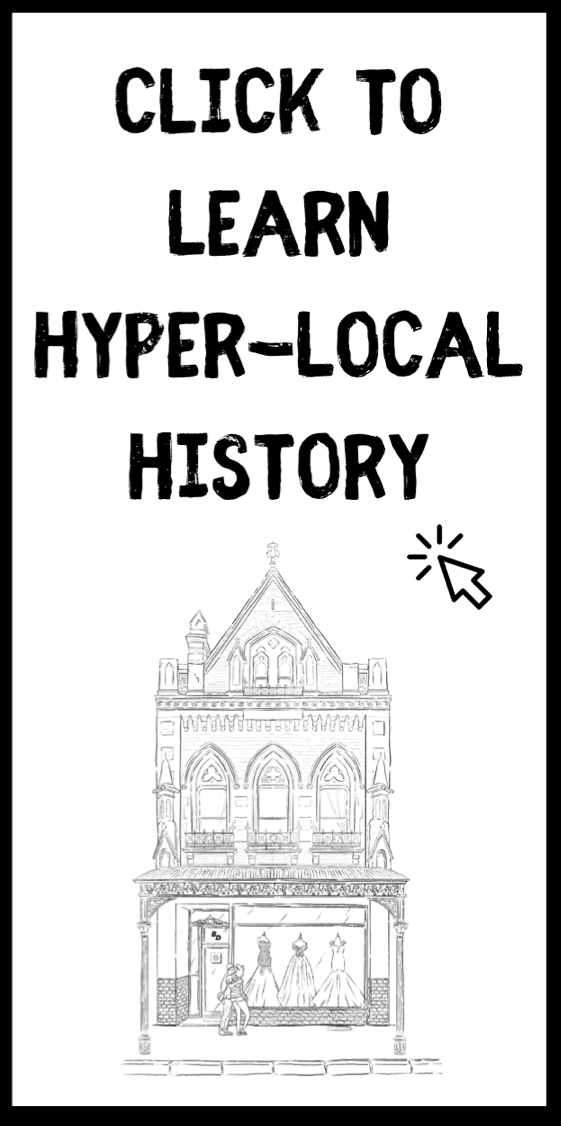
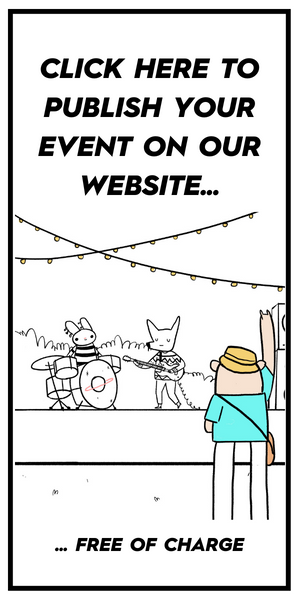
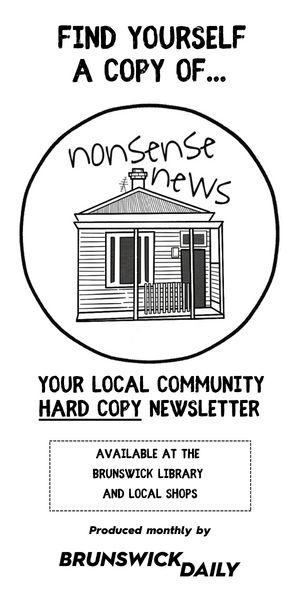

Very good article. May I share it at my facebook group page? Memories of living in Brunswick, Melbourne. It has 1,300 followers. Naturally, I’ll acknowledge Brunswick Daily as the source.
Hi Barry, by all means, please feel free to share. We would greatly appreciate it if on top of acknowledging Brunswick Daily you could also mention Ben Donaldson (the author) and Little Thoughts Studio (the illustrator) 🙂
Loved it, so interesting to know how it all began
Thanks for the feedback Katrina! There’s more History of Brunswick content coming soon!
Very good article. May I share it at my facebook group page? Memories of living in Brunswick, Melbourne. It has 1,300 followers. Naturally, I’ll acknowledge Brunswick Daily as the source.
Hi Barry, by all means, please feel free to share. We would greatly appreciate it if on top of acknowledging Brunswick Daily you could also mention Ben Donaldson (the author) and Little Thoughts Studio (the illustrator) 🙂
Loved it, so interesting to know how it all began
Thanks for the feedback Katrina! There’s more History of Brunswick content coming soon!